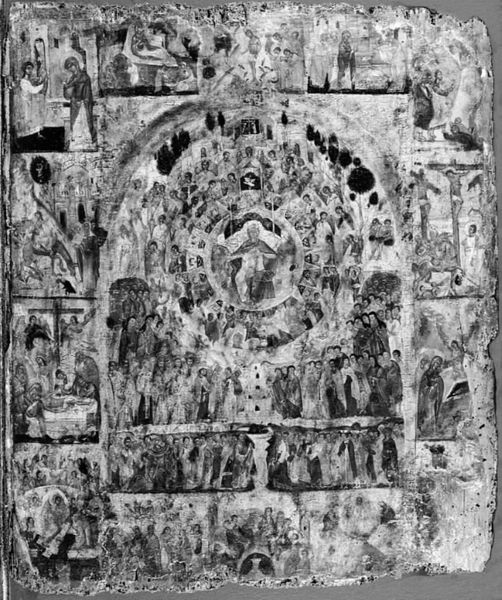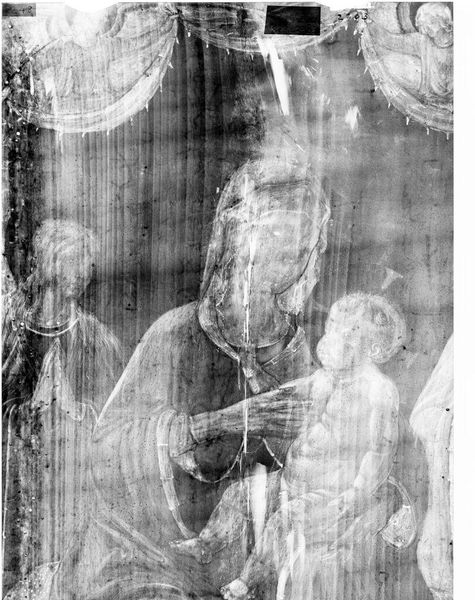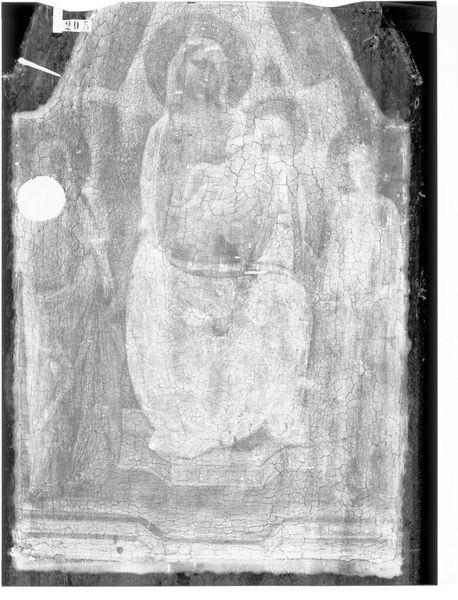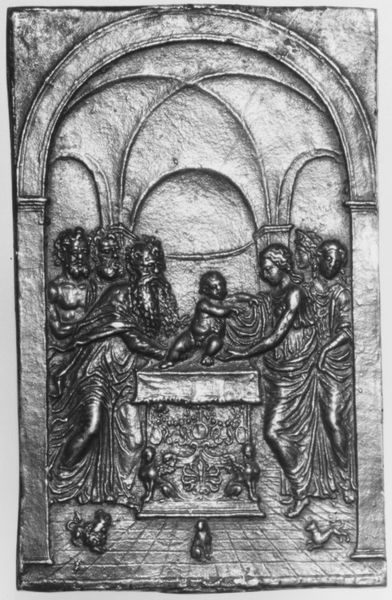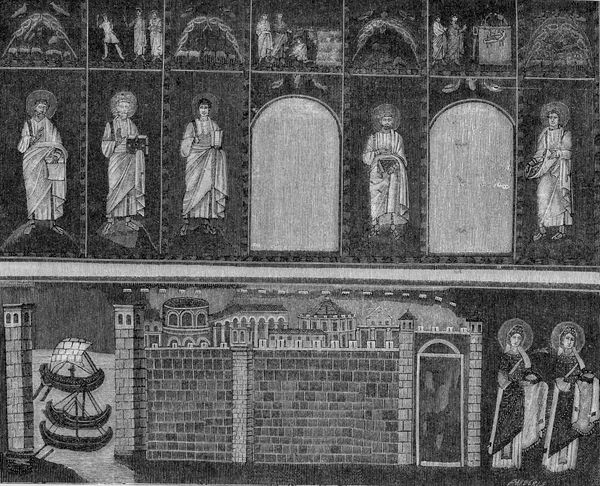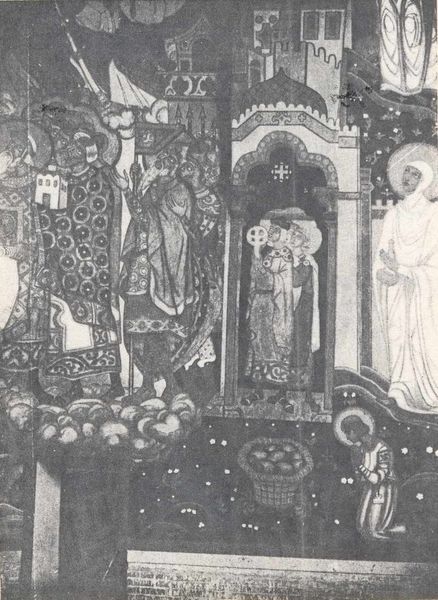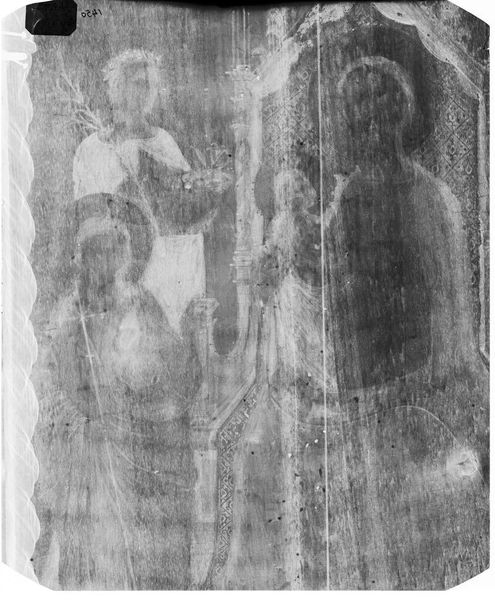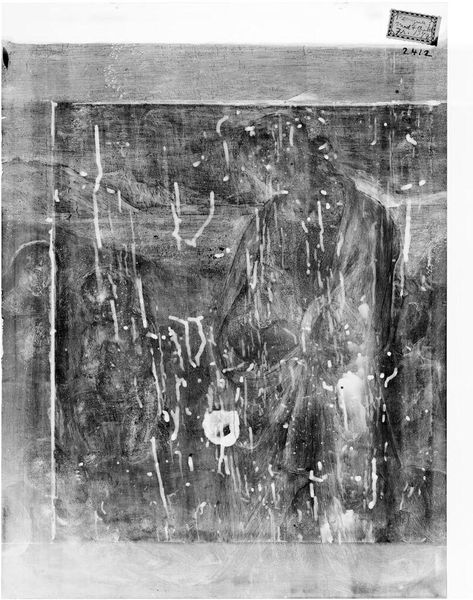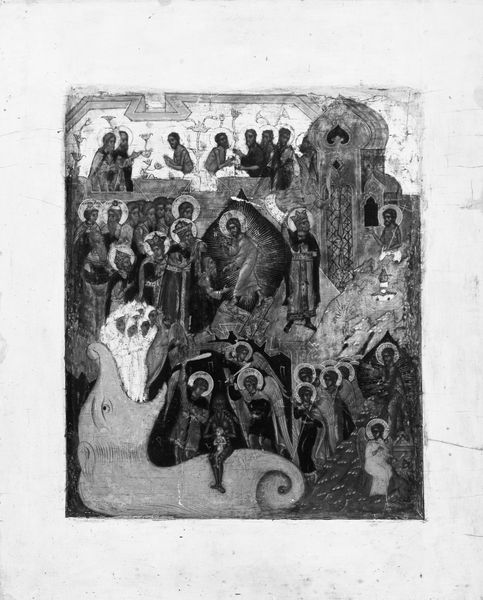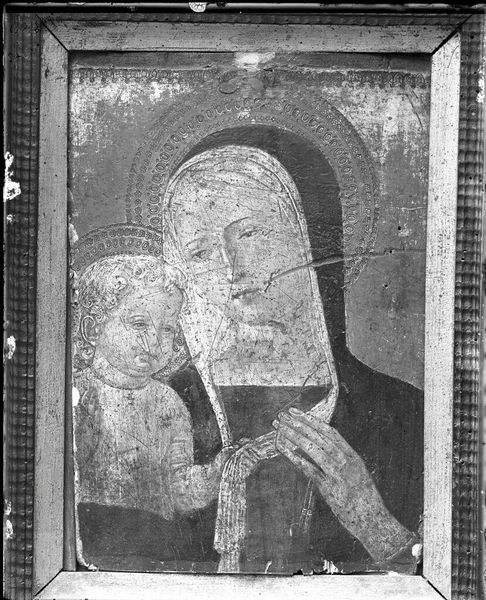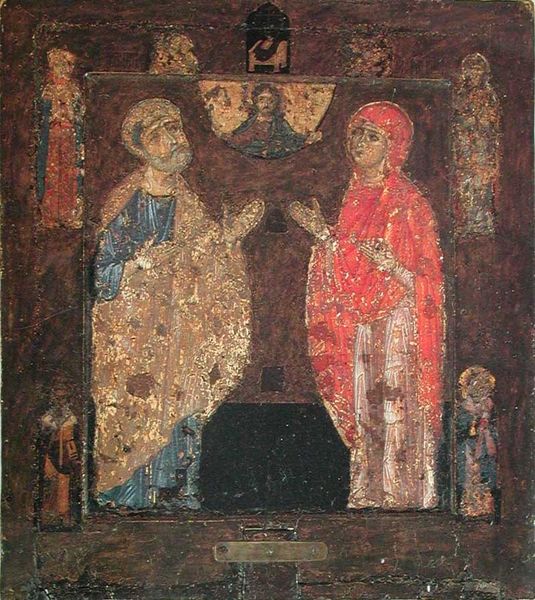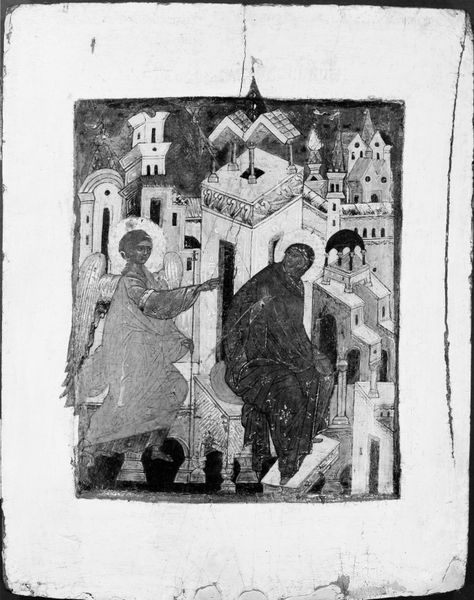
panel, tempera
#
byzantine-art
#
panel
#
narrative-art
#
tempera
#
sculpture
#
textured
#
history-painting
#
international-gothic
Dimensions: 45.5 cm (height) x 38 cm (width) (Netto)
Editor: This tempera on panel painting, titled "Death of the Virgin Mary," was created around 1386-1400. I find the expressions of the surrounding figures quite moving, almost grief-stricken, despite the visual style's conventions. How do you interpret this work, considering its historical context? Curator: The “Death of the Virgin Mary," reflects both the Byzantine and emerging International Gothic styles of the period. Considering its historical moment, what does it tell us about societal anxieties regarding mortality, gender, and faith? The focus on Mary’s death isn't simply a religious narrative, it’s an assertion of female spiritual power within a patriarchal framework. What social issues can we infer from the work? Editor: I hadn't considered it in those terms, but it does raise questions. Seeing Mary centrally placed as almost a bridge to the divine realm. How does her passing function as a symbol within the religious and social climate? Curator: Exactly! Consider the figures around her; who are they and what do they represent? Are they mourners, witnesses, or symbols of broader power structures? Remember, art never exists in a vacuum; it's a visual document reflecting its era's hopes, fears, and ideologies. Doesn't thinking about that transform how we perceive this seemingly simple depiction? Editor: It absolutely does. I am looking at it with fresh eyes and feel like I'm digging into a more complicated narrative than I first imagined. Thank you for the new lens! Curator: My pleasure. Looking at art through intersectional lenses is about more than just art; it’s about understanding ourselves and the world.
Comments
No comments
Be the first to comment and join the conversation on the ultimate creative platform.
